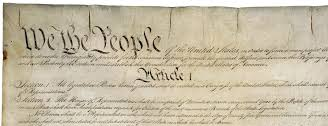On Friday, February 28, 2025, the White House hosted Ukrainian president Volodymyr Zelenskyy. Trump, Zelenskyy, and Vice President J. D. Vance met for 50 minutes in the Oval Office in the presence of reporters and TV cameras.
For the first 40 minutes, Trump and Zelenskyy were very polite to each other. Even then, however, it was clear that they had two different narratives in mind. From Zelenskyy’s point of view, it was all about the need for Russia, which invaded Ukraine three years ago, to withdraw, and for the United States and other countries to provide guaranteed security to Ukraine for the future. Zelenskyy showed pictures of the brutality and stated that 20,000 children had been kidnapped and were being re-educated in Russia. Trump, on the other hand, saw it as being about making a deal–he used the word “deal” over and over again. And while Zelenskyy spoke of Russian president Vladimir Putin as a monster and the sole aggressor in the war, Trump spoke of the war as a conflict between two mutually hostile powers and spoke of Putin as someone who could be counted on for a fair deal. Trump repeatedly called President Biden stupid and blamed Biden for prolonging the war while Trump, had he been president, would have prevented it by working out a deal from the very start. Trump wrote (or rather had Tony Schwartz ghostwrite for him) a book titled The Art of the Deal some years ago, and he seemed to regard the answer to this mess being a deal. The only provision of the “deal” that Trump even got specific about was US access to Ukrainian minerals.
Trump was resoundingly noncommittal about future security guarantees. He mentioned that European countries had pledged to help with that effort, and he suggested that the presence of US workers mining those minerals would in itself constitute a sort of security assurance for Ukraine, since Russia wouldn’t be likely to attack a country that had US workers in it. “I’m not worried about security,” he said. “I’m worried about getting the deal done. Security is the easy part.” And later, “I don’t think you’re going to need much security. I think once this deal gets done, it’s over. Russia’s not going to want to go back, and nobody’s going to want to go back.” Conspicuously absent from Trump’s words were any assurances to Ukraine of protection from Russia, any suggestion that Russia was the aggressor and Ukraine the victim, or any agreement on the need for Russia to withdraw or, for that matter, concede much of anything. Implicitly, he seemed to trust Putin to make a fair deal and then honor it. He also implied that even if Putin broke agreements when other presidents of the United States were in power, Putin would never break an agreement on Trump’s watch. Repeatedly, Trump referred to “the deal” and “the agreement” as being protection enough. Zelenskyy pointed out that Putin was raining bombs down on Ukraine that day, while knowing this meeting was taking place, not much of a sign of Putin’s good faith in the peacemaking effort.
As part of calling Biden incompetent and blaming Biden for the war, Trump boasted that he had stopped a lot of wars–prevented wars that nobody ever even knew were going to happen. “I could give you a lot of nations that would tell you right now they were probably going to war. Right now there is a nation thinking about going to war on something nobody in this room has ever heard about. Two smaller nations but still big. I think I stopped it.” He offered no details; you can decide whether you believe him on this. Zelenskyy looked a little bit amused.
It was around the 40-minute mark that the meeting got contentious and heated. It started when Vice President Vance reaffirmed the administration’s criticism of Biden’s handling of the war, referring to Biden’s approach as “chest thumping.” Vance then said, “What makes America a good country is America engaging in diplomacy. That is what President Trump is doing.” Zelenskyy responded by reviewing Putin’s past aggressions and failing to honor agreements, including the 2014 occupation of Crimea. Now, Vance got angry, told Zelenskyy that it was disrespectful of him to “come into the Oval Office and try to litigate this before the American media…. You should be thanking the president for trying to bring an end to this conflict.” This set off a direct quarrel between Trump and Zelenskyy, with Zelenskyy repeating his position, and Trump admonishing him that he doesn’t “have the cards” and should appreciate Trump for making a deal to end the war.
Rather than narrative beyond that point, I’ll just invite you to watch the video. Again, the quarreling starts at the 40-minute mark. There’s more to the earlier parts as well, so the whole thing is worth watching.
Here’s the full video of the meeting on C-SPAN.



